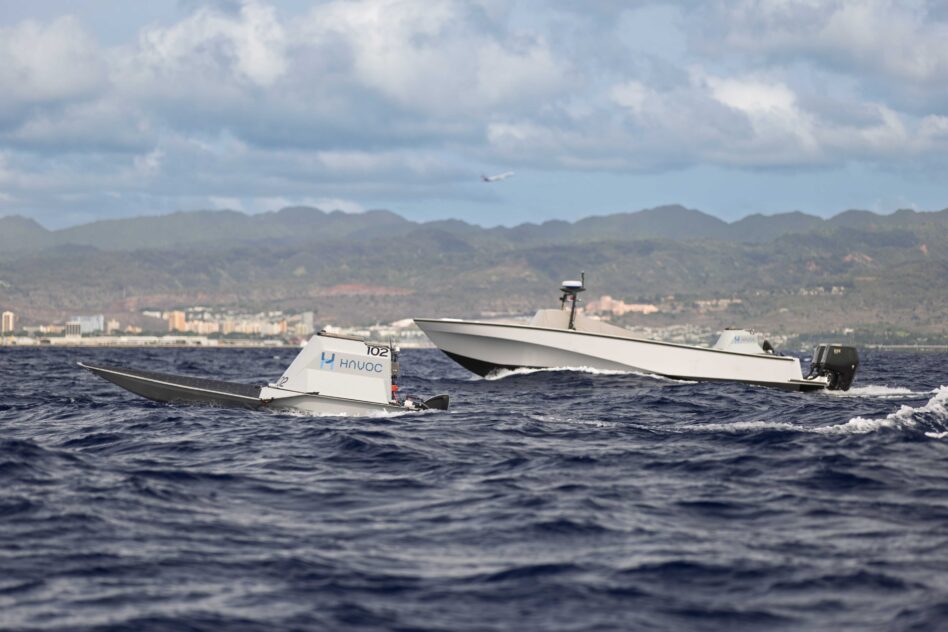Between raising $85M in October and inking deals with some big-time defense players, it’s been a whirlwind of a fall for HavocAI.
On Wednesday, the Rhode Island-based maritime autonomy startup kept things hot, announcing a partnership with SAIC to integrate the defense software mega-contractor’s Joint Range Extension (JRE) multi-domain communications and data system with Havoc’s fleet of unmanned surface vessels (USVs).
Need for speed: If you’re a loyal Tectonic reader (we see you), you’re probably familiar with HavocAI. The company was founded just last year, and since then, well, they’ve been making waves in the maritime autonomy scene. (Bada-bing!)
- They kicked things off in 2024 with the 14-foot Rampage, a low-cost USV that can be deployed in swarms and was in the water within HavocAI’s first year. The Rampage has been regularly tested by US and allied forces in some pretty important places, like the Indo-Pacific and Poland.
- So far, they’ve delivered over 30 USVs to the US military—a pretty good rookie season, if you ask us.
- Earlier this year, they unveiled the 38-foot Seahound USV and integrated Havoc’s autonomy stack on a 42-foot PacMar-built KaiKoa ASV. They’ve also teamed with Lockheed to make a forthcoming 100-foot vessel—slated for delivery this year—lethal.
- Late last month, they doubled down on their Indo-Pacific ambitions through a partnership with South Korean prime Hanwha to explore integration and joint production opportunities.
Teaming up: HavocAI’s certainly teamed up with some big players on the hardware side, but this partnership with SAIC is all about software. SAIC’s Joint Range Extension (JRE) system brings a few things to HavocAI’s USV fleet:
- JRE is a Combined Joint All-Domain Command and Control (CJADC2) tactical data link (TDL) gateway that extends the range of traditional datalinks to collect and exchange tactical data faster across sensors, weapons platforms, and C2 systems.
- Integrating HavocAI’s autonomy stack into SAIC’s JRE brings the startup’s fleet of vessels into a proven CJADC2 system that military customers are already using and integrates them into the broader established kill chain.
Havoc and SAIC are looking to get their new friendship up and running pretty much right off the bat. “At Havoc, we move fast and iterate quickly,” founder and CEO Paul Lwin told Tectonic. “Integration is already underway, and we’ll be showcasing joint capabilities at Balikatan 2026—one of the most important joint military exercises in the Indo-Pacific.”
That speedy integration demonstration at Balikatan has not been previously reported.
Power of friendship: Looking forward, it’s safe to say SAIC won’t be the last of HavocAI’s ever-growing friend group.
“Partnerships are at the core of Havoc’s approach as a business,” Lwin said. “That’s why we’ve partnered with leading shipbuilders like Hanwha and other world-class companies to augment our capabilities.”
“Our focus is on making 1,000s of assets autonomous, and we need partners to do that,” he added. “Be on the lookout for other major partnership announcements this year that will allow Havoc to make any type of platform autonomous, as well as a major AI partnership for agentic strategy decision aids into our platform.”

